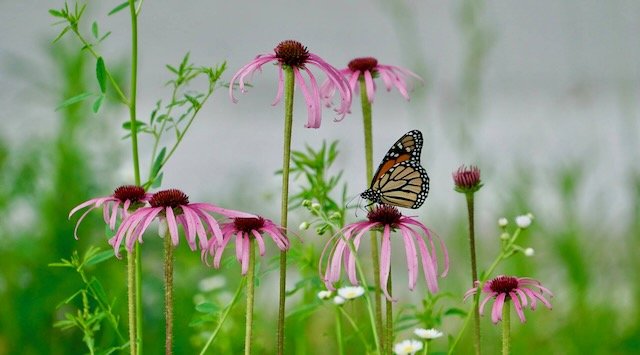Naturalist by Numbers for September 2016: Soft Mast
I believe we will grow old saying, "It is all about the plants,” and of course, I’ll age along trying to point out to groups, educators, youth and budding naturalists how entwined and complicated our natural heritage works and thrives. For this reason, I selected a broad category for our September Naturalist by Numbers monthly topic, “soft mast.”
There is a sub-season or a gap of sorts, if you will, between the defined season of summer and distinct fall time. This is when spider webs appear in profusion each morning, blue jays are verbal again, hickory limbs sag with nut crops putting on weight and the nights are a “welcome cool.”
Most of us are familiar with the term “hard mast” referring to the variety of acorns, hazelnut, black walnut and hickory nuts. “Soft mast” refers to our wild crop of the softer native fruits.
Soft mast feeds a host of wildlife including coyote, fox, striped skunk, opossum, flying squirrel, chipmunk, black bear, deer, ruffed grouse, wild turkey, mourning dove, woodpeckers, and at least 100 other species of native birds. The soft fruits, whether in developing stages to over-ripe fruit, serve as nutrition for hundreds herbivorous insects and some fungi, in turn they fuel food chains throughout the late summer and autumn.
The fragrances of many of these fruits are as pleasing as the flowers that came before them. “Animal sign” takes a new meaning during this time of year because many samples of scat are heavily influenced by what is in fruit. A naturalist can often see and smell the makeup of some mammal’s diet these gap days; even notice a bird volunteering its evidence of a sassafras or spice-bush meal on laundry hanging out to dry.
It is all about the plants, and mast is just one chapter of natural history; they are at the root of many of our conservation projects and concerns. Plant communities and individual native plant species are being eliminated or over-exploited constantly. It usually comes down to people not understanding ecology or recognizing the importance on the producer level in our natural world. 2016 appears to be a bumper year for many of our native crops.
Please take time for your September Naturalist by Numbers challenge to recognize some native fruits and share a few green thoughts with friends and neighbors. Our Chert Glades MO Master Naturalist members are doing an outstanding job recommending organizations like MO Prairie Foundation, The Nature Conservency and MO Native Plant Society, not to mention our own plant based endeavors. Keep up the solid work! We will see the fruits of our labor and future generations will thank us. Thank you - Jeff
Article and photographs by Jeff Cantrell




